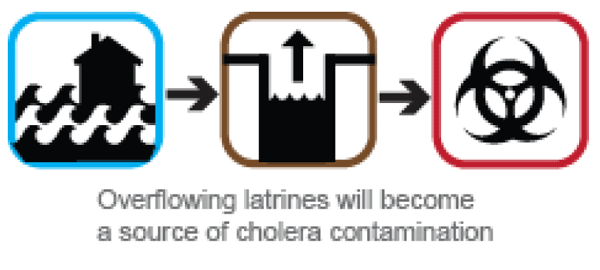“Being broke is nothing…”
Portrait of a refugee in the Palms region
“I don’t have anything. I lost everything I owned in the earthquake.”
Refugee Germaine Clercilien has been living in a tent in the Gérard Christophe field – home to Léogâne’s most important soccer team – since the day after the January 12, 2010, earthquake.
Before the earthquake, Clercilien, mother of six children, rented a small home.
Now, she lives in a tiny tent, a little space measuring about eight square meters, jammed with the few possessions she was able to rescue from the earthquake – some clothing, her SEAU and two mattresses.
“How can I feel good here? I’m not at home,” said Clercilien, who had just woken up from a nap, as she stood in front of the tent she shares with three of her children.
And the other ones?
“This house is too small. I had to send the three others to a friend and to my sister,” she said.
Since there aren’t any showers, she bathes “almost naked, out in the open” next to her tent.
“The situation in the camps… Well, here we are. The latrines are horrible, the mosquitoes bother us,” Clercilien complained. “The latrines aren’t kept clean. The nauseating odors practically kill us.”

A Haiti Grassroots Watch journalist speaks with Germaine Clercilien in front of her tent.
For many months, the camp’s latrines were maintained by Save the Children, the US-based humanitarian agency. But now the money has run out, so water distribution and latrine-cleaning (called “desludging”) have ended, and all that remains of the organization is its logo on the soiled doors of the smelly and unusable latrines.
In fact, as far back as last March the United Nations Organization for the Coordination of Humanitarian Affairs (OCHA) sounded the alarm nationwide.
In their Humanitarian Bulletin dated March 10 - 25, 2011, OCHA warned: “most of the funding to partners to support sanitation, water trucking activities and camp management will be exhausted by June 2011.”
OCHA continued:
“If sanitation activities come to an end, open defecation, indiscriminate disposal of faeces, cholera contamination and insecurity, particularly women seeking to find a private place to excrete, will increase.”

Diagram from the OCHA Humanitarian Bulletin
Despite this graphic, somber and potentially fatal observation, the actors pulled out.
A March study noted that:
- Only 48 percent of the camp residents have daily access to an adequate supply of potable water.
- Only 61 percent of that water had the correct amount of chlorine, meaning that it runs the risk of being contaminated by and transmitting cholera.
- On average, 112 people have to share a single camp latrine.
- Only 18 percent of camps have hand-washing facilities.
The statistics are even more alarming for Léogâne, where 179 people share each latrine, and where only 20 percent of the water is treated with chlorine.
All this in spite of the fact that Haiti is living “in the time of cholera.” About 386 people are hospitalized each day, and as of August 8, 2011, 426,785 people had been infected and at least 6,169 killed.

Cholera cases at Port-au-Prince camps with "oral rehydration posts," from December 27, 2010, through June 5, 2011. Source: OIM
Nobody would suspect that reality of they visited the website of Save the Children.
The humanitarian giant instead boasts: “We’re providing sanitation and safe drinking water to 100 camps through water supply systems, such as community water tanks, latrines, hand-washing facilities, bathing areas and the delivery of drinking water through water tankers.”
Obviously, Gérard Christophe Park is not on their list.
Before the catastrophe, Clercilien was a street vendor. Today that’s not possible, since she can’t get the necessary capital together.
But, “being broke is nothing. What’s worse are the mosquitoes which make our lives hell,” she said.
What does she wish for? She would like authorities to “give me a house” because she says she lacks the money necessary to rent one. She would also like to go back into business and to send her children to school.
But Clercilien is not a landowner, so she can’t get a “T-Shelter.” [See “Transition to What?”]
The drama for Clercilien and the over 634,000 other Clerciliens in 1,001 camps like Gérard Christophe Park, 17 months after the earthquake . They want to be moved. They want to be housed.
What is their future?
Go to “Transition to what?”
Return to the Introduction and watch the video

